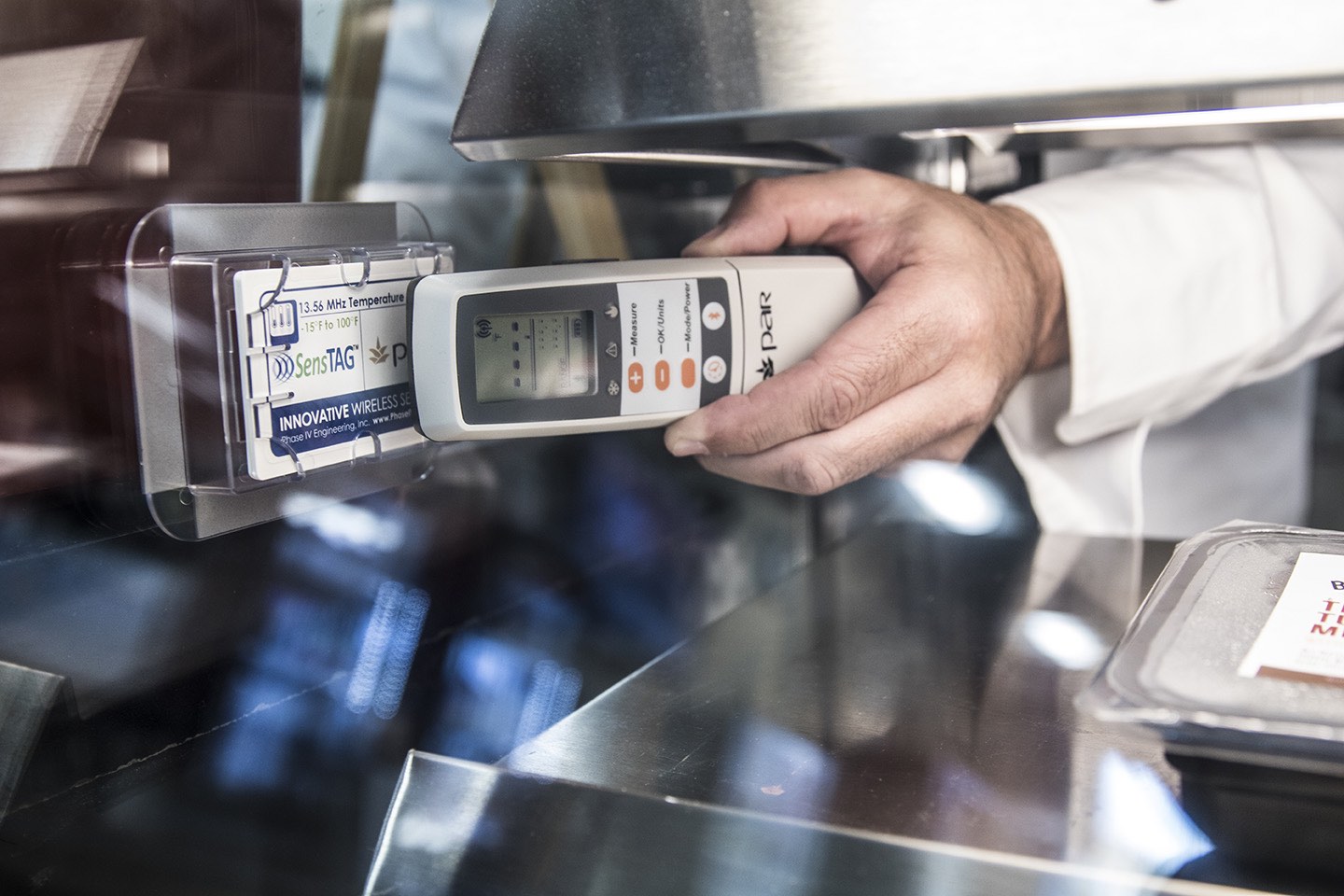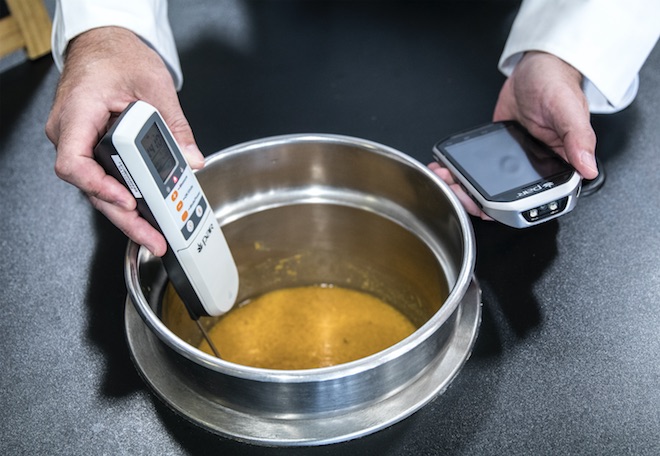Utilizing RFID For Food Safety
Article by Jordan Anderson of PAR Technology
Picture this: a manufacturer has issued a recall on its hamburger meat. Employees at a grocery store are scrambling to clear the shelves of contaminated products. But which packages of meat are contaminated, and which are still safe? It would take too much time to find out now. The reputation of the store could be destroyed if contaminated products aren’t recalled quickly. Time to pull every package from the shelves, just to be safe.
This approach, while it certainly saves lives, is inefficient and wasteful. Recalls cost a company $10 million on average in brand damage and lost sales. With proper food safety technology, food can be tracked in a manner that allows manufacturers to easily identify contaminated products. Lives are still saved, but they are saved more quickly and with less effort. RFID is one technology that provides these solutions to food safety issues.
What is RFID?
RFID, or Radio Frequency Identification, is a data collection method that sends and receives information between tags and readers using low-power radio waves. RFID is more efficient than traditional identification methods, such as barcode scanning, because it can scan hundreds of tags at once.
Types of RFID Tags
Passive, ultra-frequency tags, or RAIN RFID, are the most cost-effective and commonly used tags. They require a powered reader to reflect and transmit their signal.
Active, Wi-Fi-based tags provide real-time location information by using their own internal power supply to relay signals to standard wireless access points. These tags have a much greater read range than passive RAIN tags.
The downside to Wi-Fi-based tags is that they are expensive. Thankfully, there is a cost-effective alternative. Bluetooth low-energy (BLE) tags collect the same real-time information as Wi-Fi tags, but they are even easier to implement. While Wi-Fi tags require new infrastructure and several wireless access points, BLEs only need a connection to a Bluetooth-enabled device, such as a smartphone, to transmit signals.
Different types of tags have different uses. Passive tags are best for tracking large volumes of low-cost items, while active tags are ideal for tracking high-value, low-volume assets. Hybrid RFID systems, however, can be used for both low-cost/high-volume and high-cost/low-volume assets.
 RFID and Food Safety
RFID and Food Safety
Why is RFID capability important for Food Safety? RFID capability can be used for both temperature and location measurements. With respect to location measurements, the RFID sensors, positioned within the store, verify the employee performs a check on a checklist at a specific location. As an example, this is useful to verify checks along employee Travel Paths, whether it is visiting a specific location within a restaurant and documenting cleanliness, ensuring opening and closing routines are being followed, or verifying that certain inventory levels have been verified, RFID location tags can prove to be invaluable.
There are numerous methods to measure temperature within a store environment, ranging from IoT sensor type devices to RFID Temperature Tags. One of the benefits of the RFID tag is that it requires the employee to go to the location of the tag to interrogate the temperature data from the tag. In this case, the employee may also be required to check the condition of the freezer or cooler while there. Another benefit of utilizing the RFID Temperature Tag is that it does not require a monthly hosting fee for its use or connection to the store internet. The employee simply approaches the device with the temperature-measuring device, interrogates the tag by holding the unit close to the tag and uploads the data to the appropriate check on the checklist. Recent advancements in RFID temperature tags have evolved the tag from a thick credit card size device to an adhesive label that can either be applied on the outside of a pallet or container, or included in the shipment to record temperatures at pre-defined intervals along a product’s transit.
The importance of ensuring proper temperature regulation of produce has never been more important. To successfully implement a versatile food safety system, the monitoring and data capture of HACCP procedures must be taken properly in real-time. PAR Technology’s Temperature Measurement Device (TMD) ensures this is executed following strict FDA and HACCP guidelines. Without these technologies, food related companies leave themselves susceptible to producing foodborne outbreaks, tainted brand image, and profit loss. Now, more than ever, is the time to invest in food safety technology.
About the Author:
 Jordan Anderson is the Product Marketing Specialist for the PAR SureCheck platform. Jordan uses his background in sales and marketing to develop key messaging for SureCheck products and to discuss important issues regarding food safety; with the ultimate goal being to educate others on the dangers and consequences of improper food safety practice.
Jordan Anderson is the Product Marketing Specialist for the PAR SureCheck platform. Jordan uses his background in sales and marketing to develop key messaging for SureCheck products and to discuss important issues regarding food safety; with the ultimate goal being to educate others on the dangers and consequences of improper food safety practice.
About PAR Technology:
PAR Technology Corporation's stock is traded on the New York Stock Exchange under the symbol PAR. PAR’s Restaurant/Retail segment has been a leading provider of restaurant and retail technology for more than 30 years. PAR offers technology solutions for the full spectrum of restaurant operations, from large chain and independent table service restaurants to international quick service chains. Products from PAR also can be found in retailers, cinemas, cruise lines, stadiums and food service companies. PAR’s Government segment is a leader in providing computer-based system design, engineering and technical services to the Department of Defense and various federal agencies. For more information, visit https://www.partech.com/ or connect with PAR on Facebook and Twitter.
-- More RFID articles:
